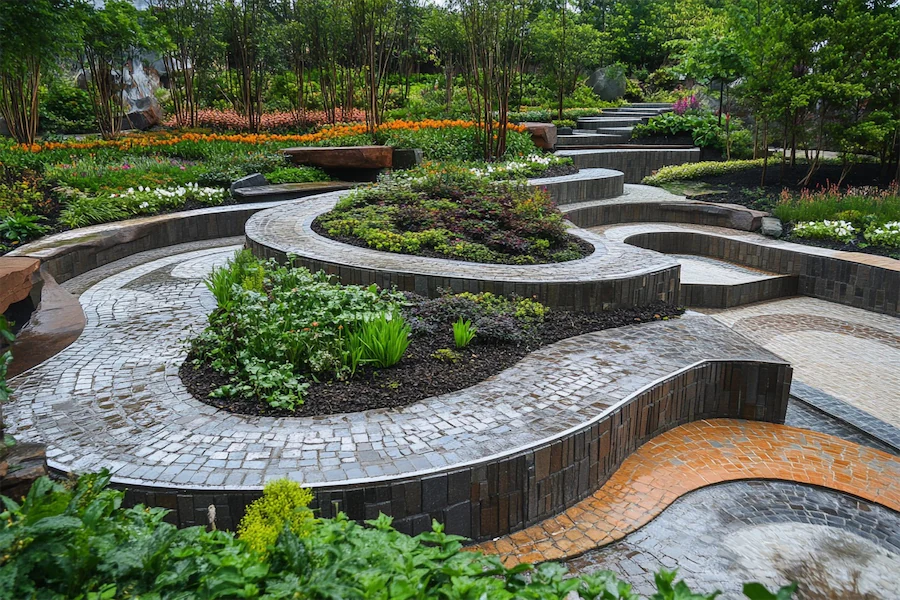A Geometric Garden is a meticulously designed landscape that employs precise geometric shapes and patterns to create a harmonious and visually appealing environment. This style emphasizes symmetry, proportion, and the strategic arrangement of elements to establish order and balance within the garden space.
History and Origins of Geometric Gardens
The concept of geometric gardens dates back to ancient civilizations, notably the formal gardens of Persia and the Renaissance gardens of Italy and France. These early designs showcased the human desire to impose order on nature, reflecting cultural values of harmony and control. The French formal gardens, such as those designed by André Le Nôtre, are prime examples where geometric layouts were used to complement architectural structures, creating a seamless transition between indoor and outdoor spaces.
Key Features of Geometric Gardens
- Symmetry and Balance: Central to geometric gardens is the use of symmetrical layouts, where elements on one side mirror those on the other, fostering a sense of equilibrium.
- Defined Shapes: Incorporation of clear geometric forms—such as squares, rectangles, circles, and triangles—in the arrangement of flower beds, lawns, pathways, and water features.
- Structured Plantings: Utilization of neatly clipped hedges, topiaries, and uniformly pruned trees to reinforce geometric patterns and provide structural clarity.
- Central Axes and Focal Points: Implementation of main pathways or visual lines that lead to focal points like statues, fountains, or architectural elements, enhancing the garden’s formal aesthetic.
Applications of Geometric Gardens
Geometric garden designs are versatile and can be adapted to various settings:
- Residential Landscapes: Homeowners can incorporate geometric principles to create organized and aesthetically pleasing outdoor spaces that complement their property’s architecture.
- Public Parks and Botanical Gardens: Geometric layouts are employed to facilitate navigation, create visual interest, and provide structured areas for various activities.
- Historical Restorations: Restoration projects often revive geometric garden designs to preserve cultural heritage and showcase traditional landscaping techniques.
Considerations When Designing a Geometric Garden
- Site Analysis: Assess the property’s dimensions, topography, and existing features to determine suitable geometric patterns that align with the space.
- Plant Selection: Choose plant species that respond well to pruning and shaping, ensuring they can maintain the desired geometric forms over time.
- Maintenance Commitment: Geometric gardens require regular upkeep, including trimming, pruning, and cleaning, to preserve their structured appearance.
- Integration with Surroundings: Ensure that the geometric design harmonizes with the surrounding environment and architectural style, creating a cohesive and unified look.
Conclusion
Geometric gardens represent the intersection of art, architecture, and nature, offering a timeless approach to landscape design that emphasizes order, beauty, and harmony. By thoughtfully incorporating geometric principles, designers and homeowners can create outdoor spaces that are both functional and visually captivating, reflecting a rich historical tradition while accommodating contemporary aesthetics.
